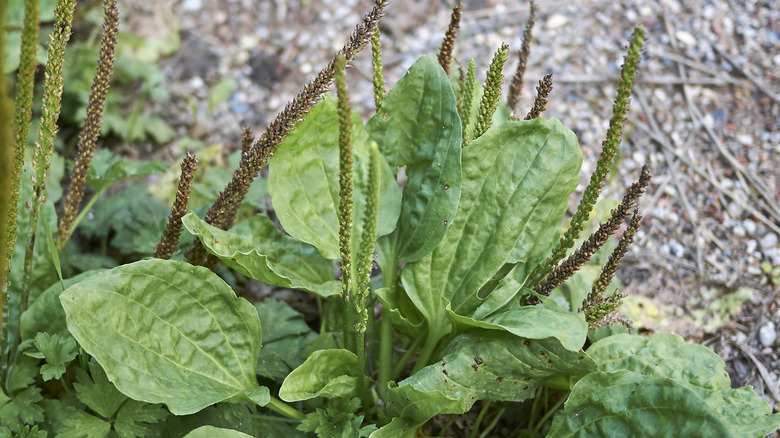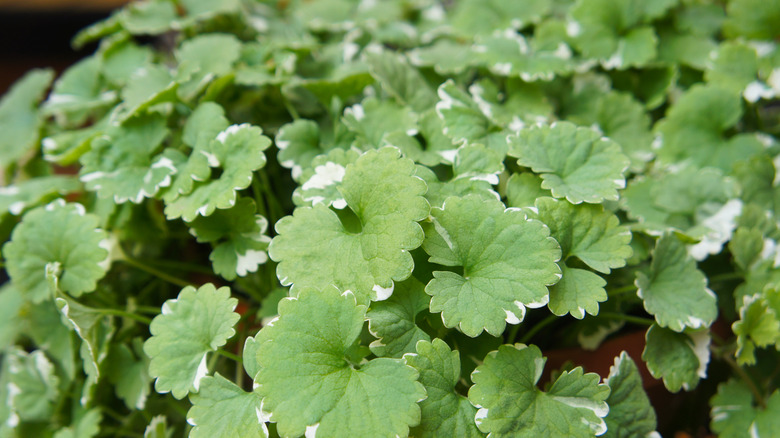Some signs of poor drainage in your lawn are obvious. Areas with standing water or moss growing indicate that there is nowhere for water to flow or soak into the ground. Other signs, like certain weeds appearing, may seem like a nuisance but could indicate there is a bigger problem with your soil. It may be tempting to focus on removing these weeds with herbicide, but if the issue is drainage, you are just treating the symptom without correcting the underlying cause.
While turf grass needs good drainage to grow and thrive, weeds can grow almost anywhere. In fact, they may be attracted to your lawn because of its poor drainage. These unwanted eyesores in your lawn prefer under-fertilized, compacted soil, and as their seeds are deposited by wind or birds onto your lawn, they find the perfect place to thrive. Poor drainage can be caused by compacted soil, a build-up of synthetic lawn chemicals, drought, or too much rain. Here are some common weeds that may be telling you your soil is not draining properly.
Plantain

No, this is not the banana-like fruit you get at the supermarket — we wish! Plantain (Plantago major) is a perennial plant that shows up just about anywhere. You’ll see this weed in sidewalk cracks, on the side of the road, and in lawns, especially where there is poor drainage. Plantain roots are exceptional at breaking up compacted soils, improving overall drainage. What we consider a weed has actually been used as an edible green rich in vitamins, but of course, you would never want to eat anything that grows in a lawn that has been treated with herbicides or pesticides.
One of the reasons plantain spreads so abundantly is the number of seeds produced by each bloom. As the upright flowers die back, they leave behind around 20,000 seeds which can be spread by the wind, by walking over the spent blooms, or pretty much anything that comes in contact with this prolific plant.
Knotweed

When you are dealing with a plant that is also known as “smartweed,” you know you have your work cut out for you if you are trying to eradicate it. This plant is in the Polygonum family and consists of about 130 different kinds of species. Some types are annuals and some are perennials, depending on what is hardy in your region, but they are all drawn to consistently moist soil. Even if you have compacted soil, you may not have to deal with this specific type of plant if your area experiences frequent droughts. However, if your lawn holds onto water, knotweed might be an ongoing issue.
The presence of knotweed in your yard or less manicured spaces is not all bad. Many species grow spikes of pretty white or pink flowers. The seeds left behind are a favorite among some types of birds, including mourning doves and ducks.
Ground Ivy

Skymoon13/Getty Images
It can be difficult to get grass to grow in shady areas, especially if the soil has poor drainage. In these spots, you might find yourself battling ground ivy. This member of the mint family is also known as Creeping Charlie and has a similarly voracious growth habit. Ground ivy can be identified by its square stems, lobed round leaves, and small flowers. While ground ivy is considered a weed, it also grows where few other plants can thrive. As a ground cover, it helps provide erosion control in moist, shady, sloped areas while providing nectar for beneficial insects from late spring through early summer.
Like knotweed, ground ivy can be difficult to control. If you don’t mind nature taking over in the areas you’re struggling to get grass to grow, you might find this plant pleasant. It can grow up to 20 inches tall, so it will need to be trimmed during the warmer months. There is a benefit to cutting this plant, though. Because it is related to mint, it also releases a refreshing scent when you’re mowing.




